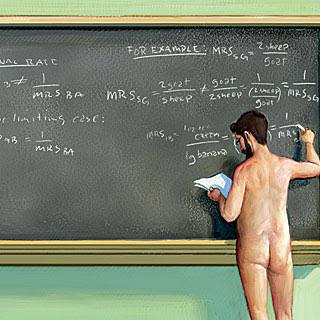 Would a tax on the sugary, em, I mean the corn syrupy sweet taste of soft drinks reduce consumption? And would that in turn cause young people to drink less and possibly curb the tide of childhood obesity? An article in Health Affairs suggests the tax would have to be pretty darn steep to do much good:
Would a tax on the sugary, em, I mean the corn syrupy sweet taste of soft drinks reduce consumption? And would that in turn cause young people to drink less and possibly curb the tide of childhood obesity? An article in Health Affairs suggests the tax would have to be pretty darn steep to do much good:
[T]here was no significant relationship between differential soda taxes and overall soda consumption for the whole population. This means that, within the limitations of our analysis, increasing the differential tax on soda doesn’t affect total soda consumption. We found a significant relationship between differential soda taxes and BMI change from third to fifth grades. But this finding does not hold up under different statistical analysis, and the effect may be attributable to children who are already at risk for being overweight.
The tax rates for the study ran up to $0.07 on the dollar, with an average of about $0.04. The calculations suggest that it would take more than double the highest rate, about $0.18, to have substantial impacts. In other words, if you want to change people’s behavior in this case, a small tax isn’t going to do the trick.
What is the rationale for government intervention here? Is this a Pigouvian tax — that is, do soft drinks cause obesity and does obesity cause impose “external” costs on the rest of the population? Or is it a “protect the children from their parents” rationale?
Let me know what you decide!


 Welcome back to campus. With the new term comes an all new and improved Economics TeaBA. This term promises to offer more beverages, more insight, more excitement than all of the prior terms of economics TeaBA combined.
Welcome back to campus. With the new term comes an all new and improved Economics TeaBA. This term promises to offer more beverages, more insight, more excitement than all of the prior terms of economics TeaBA combined. Before I catalog my notes on the last section of the book, The Sage, I’d like to simply point out some excellent resources that have helped me to put Schumpeter’s work in context. Indeed, that is one of the main challenges for economists today, I think, is what was genuinely important about Schumpeter’s work and what wasn’t.
Before I catalog my notes on the last section of the book, The Sage, I’d like to simply point out some excellent resources that have helped me to put Schumpeter’s work in context. Indeed, that is one of the main challenges for economists today, I think, is what was genuinely important about Schumpeter’s work and what wasn’t. This is a continuing live blog for
This is a continuing live blog for  I’m sure that I am not the only member of the
I’m sure that I am not the only member of the  The Economist is hosting an
The Economist is hosting an